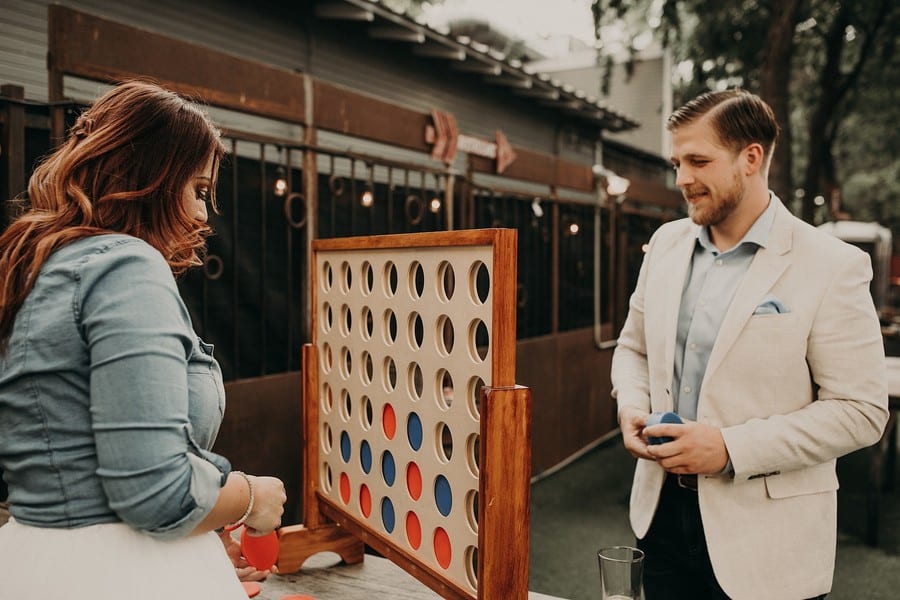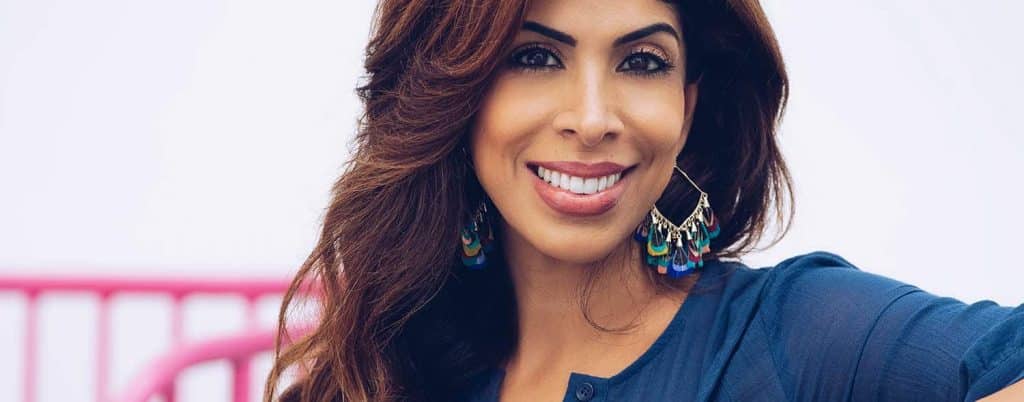
Are you ready to start your headshot photography business? Good news: you’re just a few steps away from making that dream a reality! Read on…
Everyone needs a good headshot. And we mean EVERYONE
It’s a fact: classic headshots never go out of style. From CEOs in hospitality to small-town bakers, every professional needs a powerful portrait that showcases them in their best light. This fact makes professional headshot photography a stable, profitable niche!
Dig into our step-by-step guide:
- Get awesome at headshots
- Define your (all-new) niche
- Build an undeniably awesome portfolio
- Proven tips for marketing and booking
#1: Get Awesome at Headshots
Before you dive into the nitty-gritty of how to start a headshot photography business, make sure you dedicate some time to honing your overall technical skills. This way, when you’re ready to book headshot photography clients, you’ll be confident in the quality of your work. Here are several great ways to get started.

Lauren Alexis Photography
Research other professional headshot photographers
Search online for educational resources, or take a good, old-fashioned trip down to your local bookstore (my personal favorite option) to acquire some literature to get you started. Make sure you seek out information specific to your genre — for example, a book on the best portrait poses — but general reads on the craft of photo-making itself are also helpful. Since your goal at the moment is to sharpen your skills, it’s never a bad idea to review the basics.
#ShootProofPRO Tip: Learn from the photo experts
When researching photos, make it a point to identify some headshot photography experts in the field, such as:
- Peter Hurley – Mr. Hurley is known for his posing tutorials
- Jessica Osber – look at those catch lights in her clients’ eyes
- Zack Arias – he’s photographed everyone, from Billboard artists to major CEOs
- AJ Coots – watch her video on making storytelling portraits
- Cathryn Farnsworth – you’ll love the way she creates multiple looks for her clients
- Claire Newman-Williams – her actor portraits are simple yet intense
- Dan Almasy – explore his unique motion lighting effects
- Andrew Faulk – get inspired by his impactful environmental images
- Marc Cartwright – his Kids portfolio is especially fun to view
Ask yourself: What makes their imagery masterful? Do they demonstrate excellence in portrait lighting? What do I like about their posing?
Soak up all the headshot photography tips you can find from the pros. They’re considered “experts” for a reason!
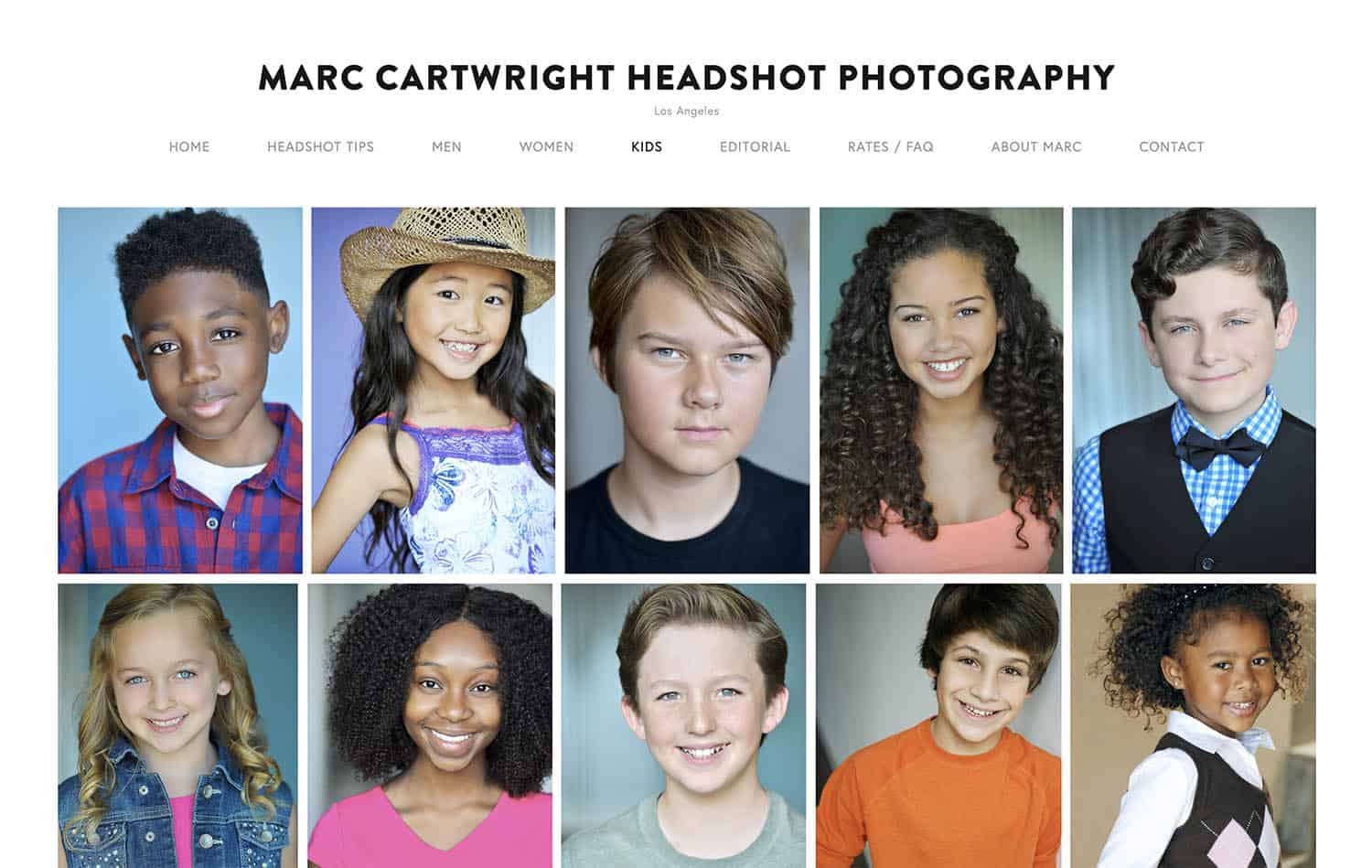
Marc Cartwright
Practice making photos people will love
You will, of course, need faces to photograph, so invite a few friends or family members to pose for you. While you get started, shooting in a low-pressure environment will help you develop your headshot photographic style. Make sure you experiment with different backdrops, camera settings, and lighting setups to find what kind of professional portraits you most enjoy capturing.
Create your signature style
Part of creating a distinct style is using similar settings for each headshot session. What do you want your unique brand of headshot photos to look like?
Are you a natural light photographer? Or will you include artificial light sources like flashes and strobes? See how ADOR Photography combines natural and artificial light!
What’s your camera’s sync speed? If your shutter speed can’t be any higher than, say, 1/200″ when you’re using off-camera lighting, this could create challenges for you depending on the environment.
Do you prefer a shallow depth of field? If so, make sure you have the right camera lens for the job! If your lens won’t open up beyond f/4 or even f/5.6, you may need to invest in a new lens.
Continue to test shoot until you feel confident in your professional portraits. Once you have a handle on your shooting and style, you’re ready to move on to the next step.
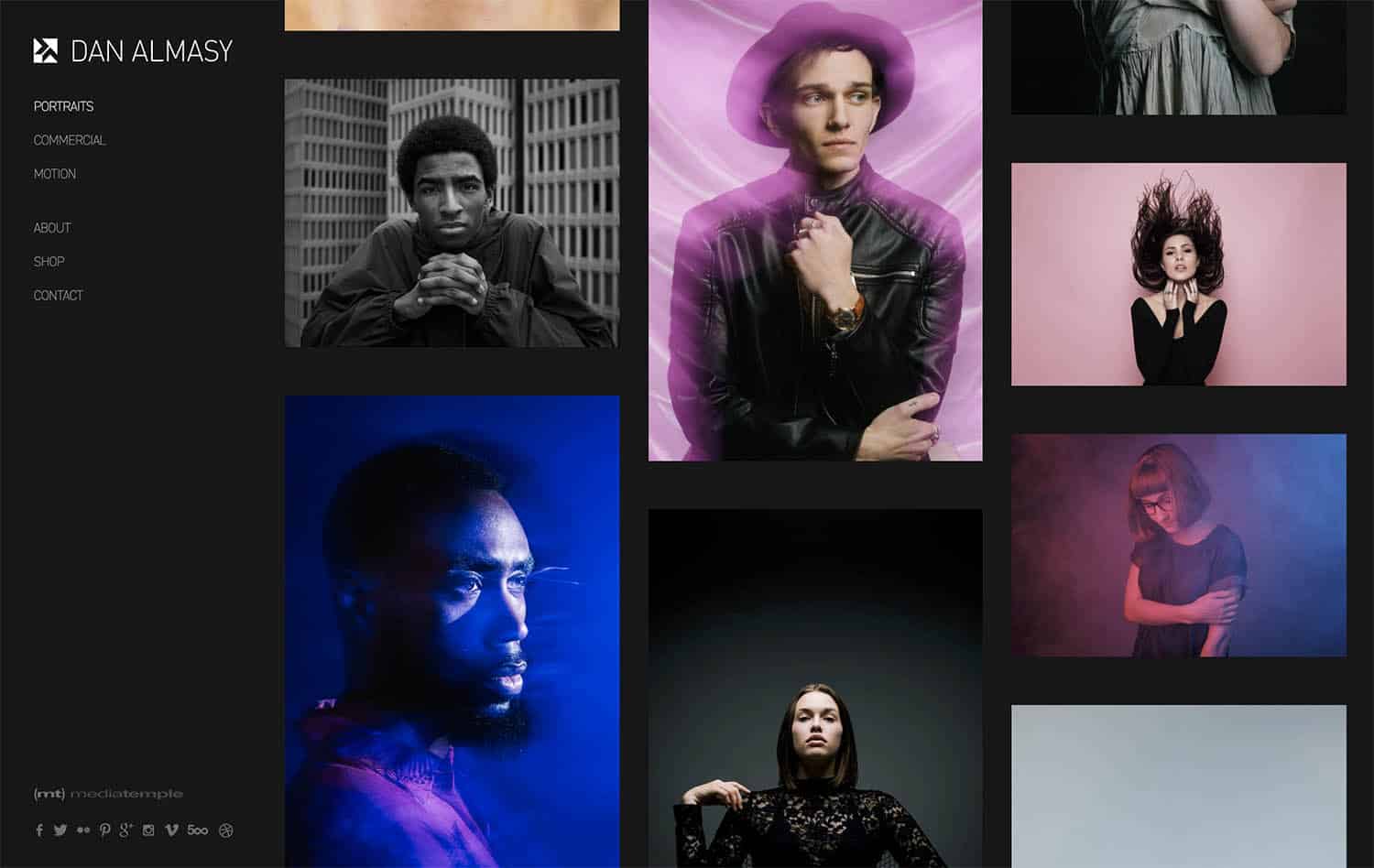
Dan Almasy
#2: Define your (all-new) niche
You’ll want to “niche down” if you want to be successful. What does this mean? Simply that you should narrow your creative focus and cater to that specific clientele.
“Who are my ideal clients?”
Review and reflect on the different images you’ve captured thus far. Did you especially love crafting that portrait of your friend who’s an actor? Was photographing your cousin’s corporate images just not your cuppa tea?
Sure, you can be one of those “I do everything” photographers. But you’ll gain more traction if you choose a specific focus, such as:
- modeling
- lifestyle / branding
- corporate
- film
- theater
- musician
- pets (Why not? Show dogs need photos, too!)
What other niche can you dream up?
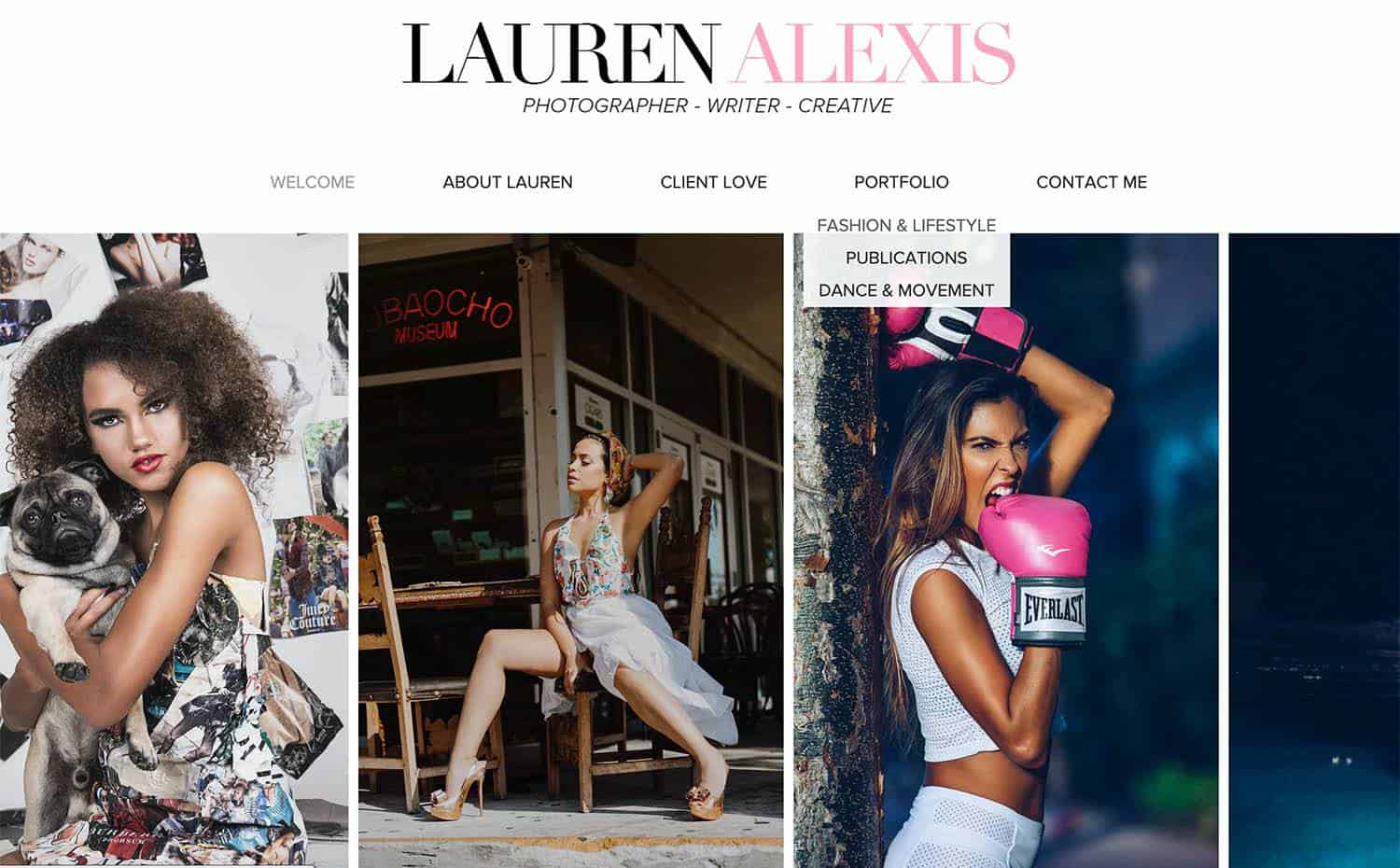
Lauren Alexis
Say “no” to work that won’t help you grow your business
I know you’re wondering: by niching down, aren’t I limiting my opportunities? Trust me: not at all!
Think about it this way: if you have a toothache, do you visit a general doctor or a dentist? I’m sure you’ll agree that a dentist is your best bet for a toothache because they’re the expert.
When you choose to specialize and say no to other photo genres, you tell your audience: I’m the best person for this particular job.
#ShootProofPRO Tip: Ask your clients for feedback
Ask your first “clients” (your models) to provide a brief review of their experience with you. Prompt them to share honestly with questions like:
- What was the best part of your experience with me?
- How could your photo experience with me have been better?
Use their feedback to craft an even better experience for your next clients!
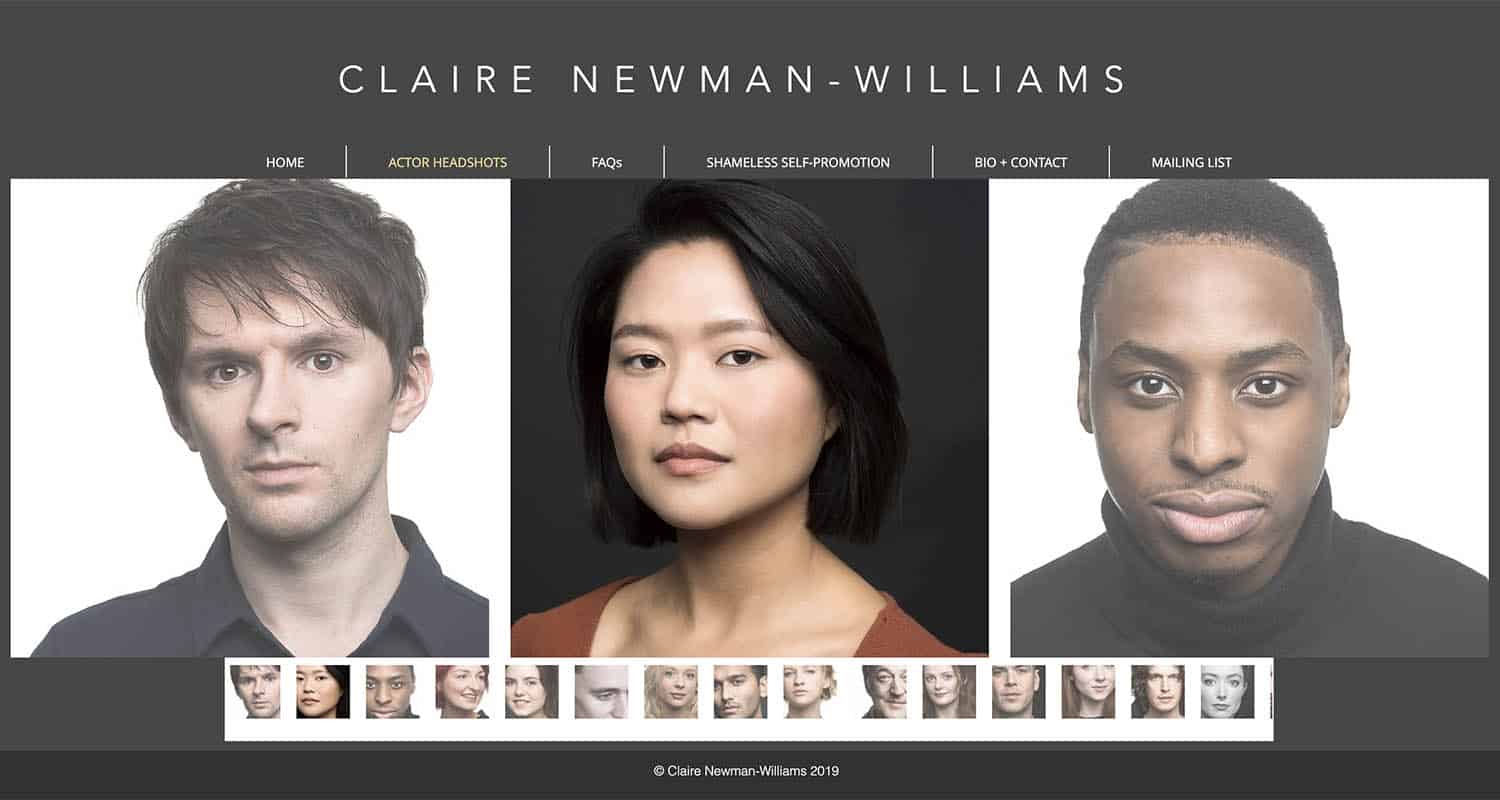
Claire Newman-Williams
#3: Build an undeniably awesome portfolio
Finally! You’re about to get started on crafting a portfolio using every great headshot photograph you’ve made.
Select your best images
Sift through your headshot photographs and set aside the ones that best represent what you shoot—and what you want to shoot more often. These are the pictures that deserve a place in your portfolio.
Remember: the key is to select shots that best reflect your chosen niche. For example, if you’re a modeling photographer, pick images that clearly send that brand message. (This is a somewhat subjective process, so trust your artist’s intuition!)
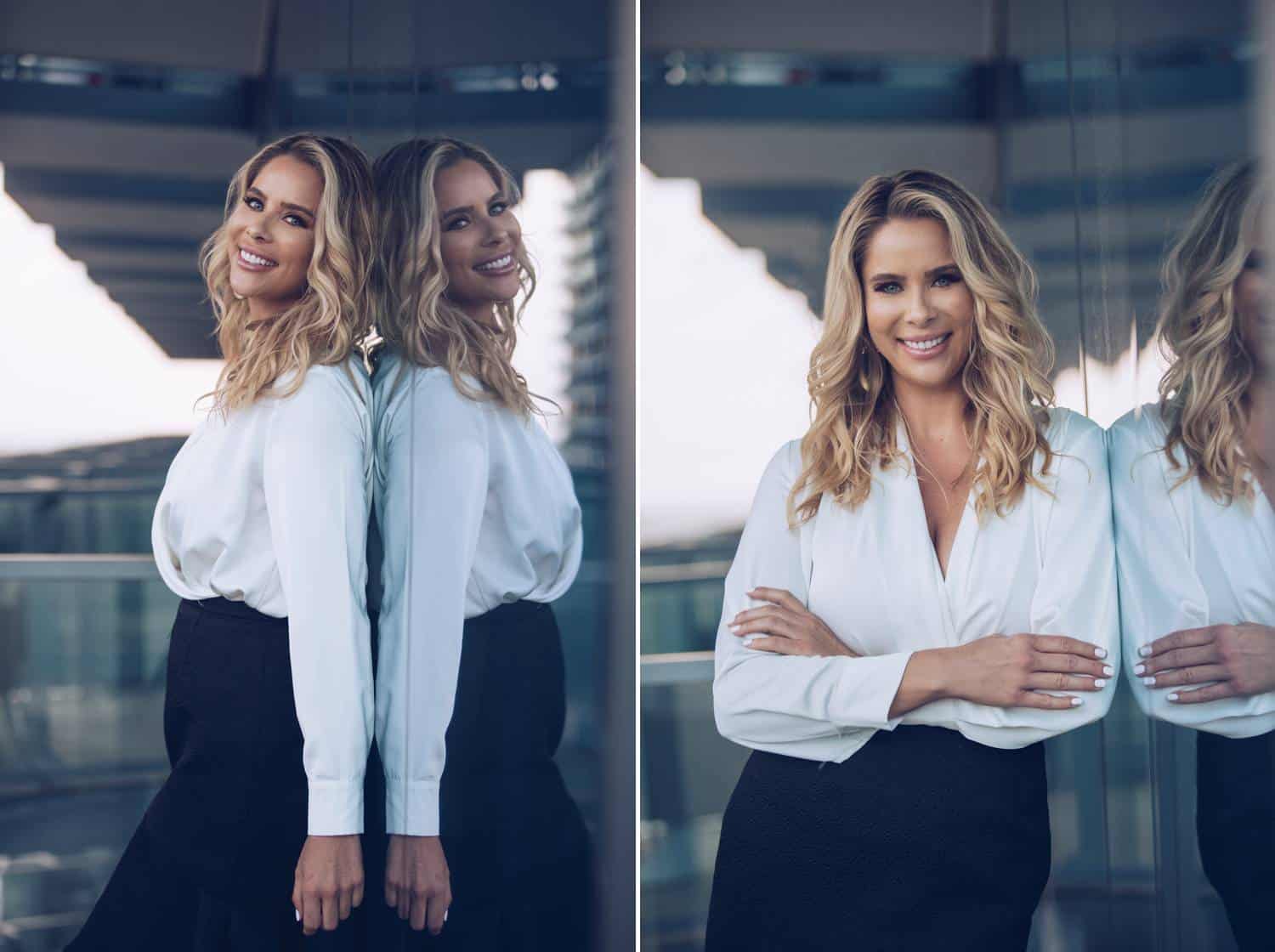
Lauren Alexis
Craft a portfolio people will LOVE to look at
Once you’ve curated your best images, add them to your portfolio in a purposeful order. A portfolio should guide the viewer on a journey of emotions or compositional styles, so this part of the process is important!
In photo school, one of my professors suggested:
“…make small prints of your portfolio images and manually experiment with their placement until you love what you see!”
(Thanks for the photography tips, Professor Carson!)
Finally, decide whether you need a physical copy of your portfolio in addition to your digital one. If you plan to open a studio or conduct in-person sales, a tangible portfolio will enhance the experience and increase your sales!
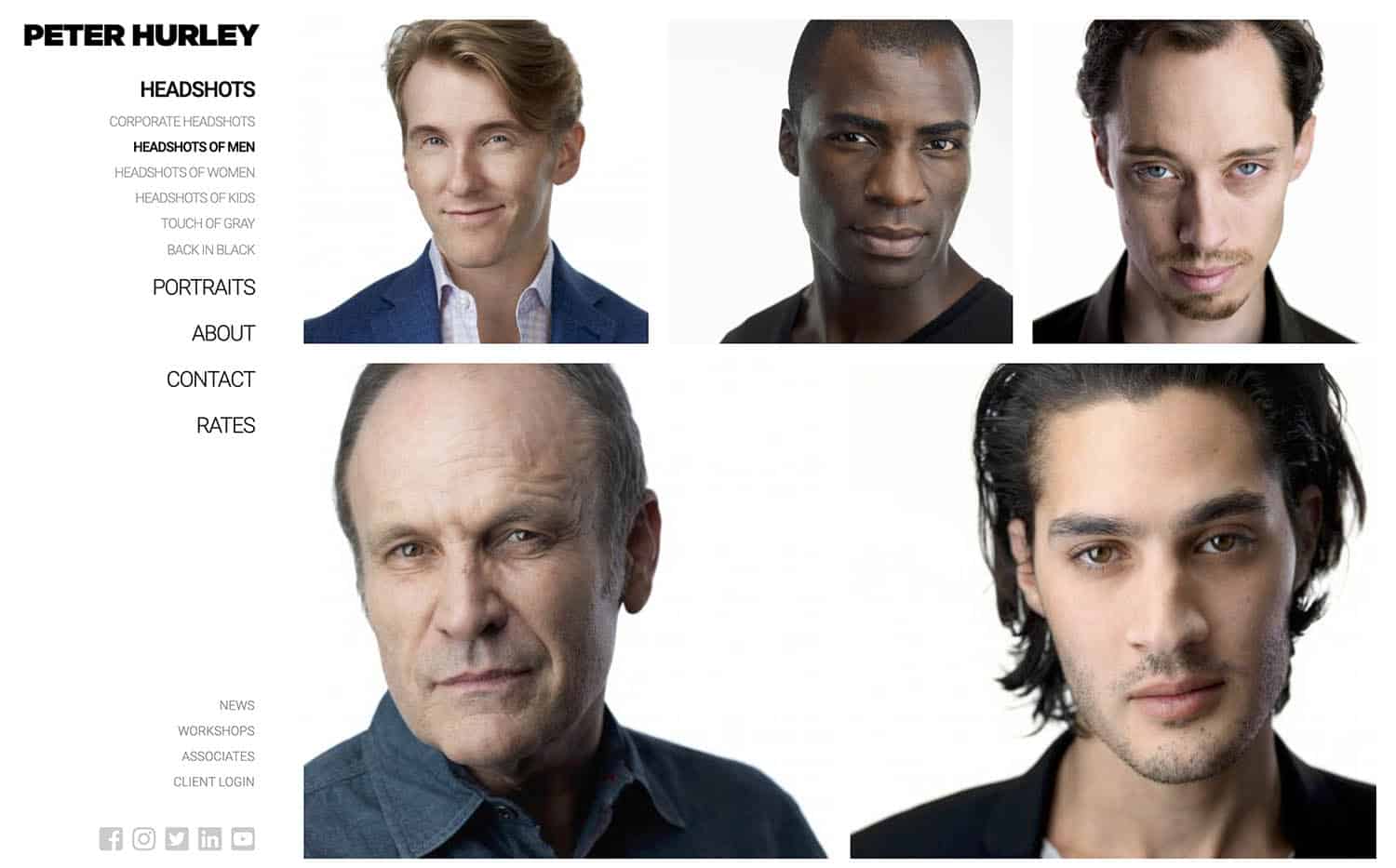
Peter Hurley
#ShootProofPRO Tip: Save the best shot for last
Every image in your portfolio should be meticulously chosen; but the last photo is the most important since it’s the final impression. Choose a final shot that will make your viewers say, WOW!
#4: Proven tips for marketing and booking your business
Congratulations! Look how far you’ve come! Now it’s time for a few finishing touches before you launch your business into the world.
Review your branding
For our purposes here, your “brand” is:
- who you are as a photographer
- your photos and graphics and the vibe they give off
- the words you use to communicate
Your brand will always be evolving, so start with the basics and leave yourself room to grow!
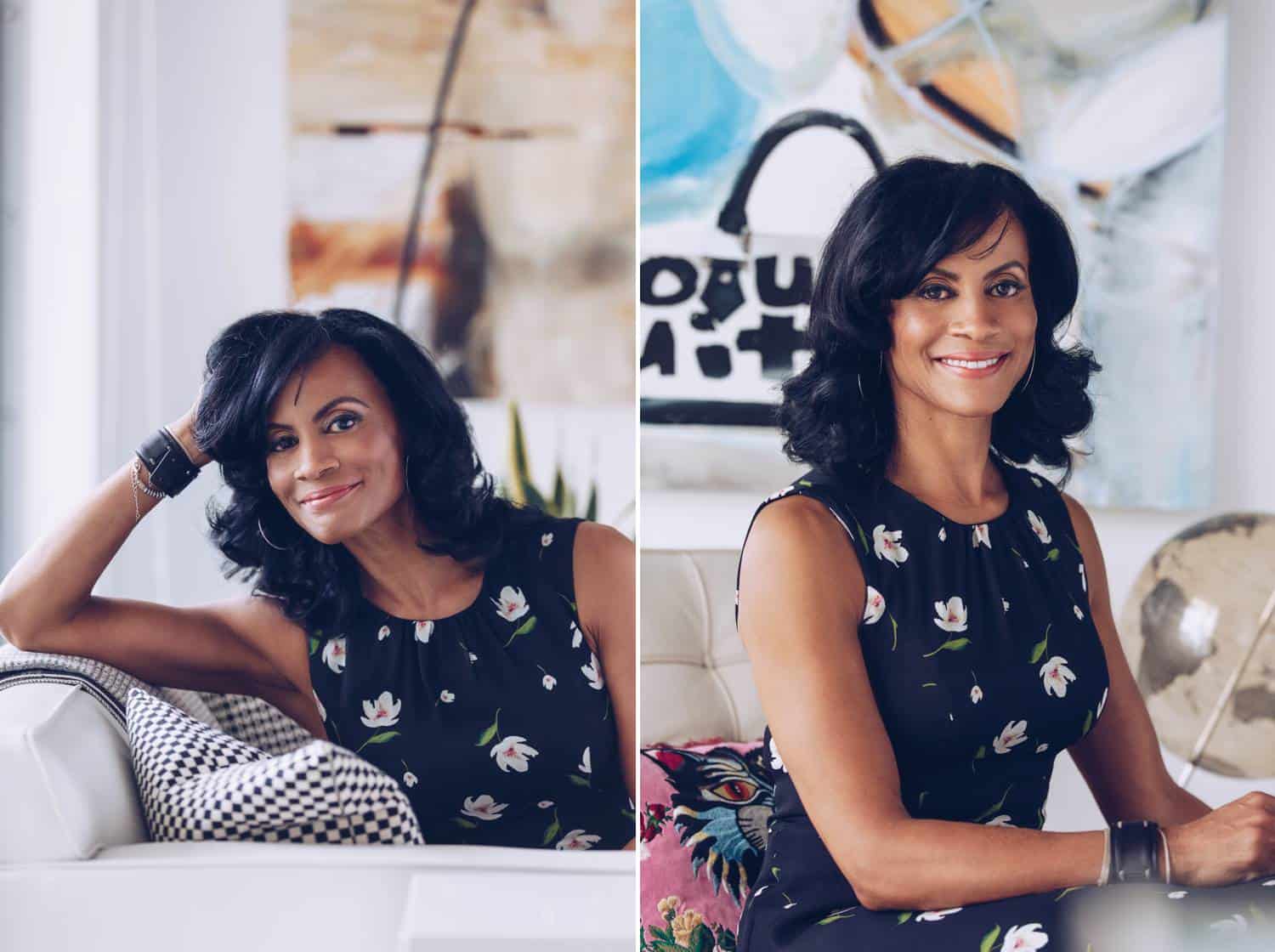
Lauren Alexis
“Do I need a website?”
Your photography website is your own little sandbox—your own unique corner of the interwebs. Your website is often the first experience people have with your brand, so you want it to look like you, sound like you, and represent the very best of you and your talent at every turn.
Use the social media platforms that work for YOUR brand
Get your brand on at least one social platform; three at the most. We love the ‘gram, Facebook, and TikTok for photographers.
Pick your preferred platforms based on the type of work you offer. For example, if you’re focused on corporate headshots, LinkedIn might be the best social solution for your brand.
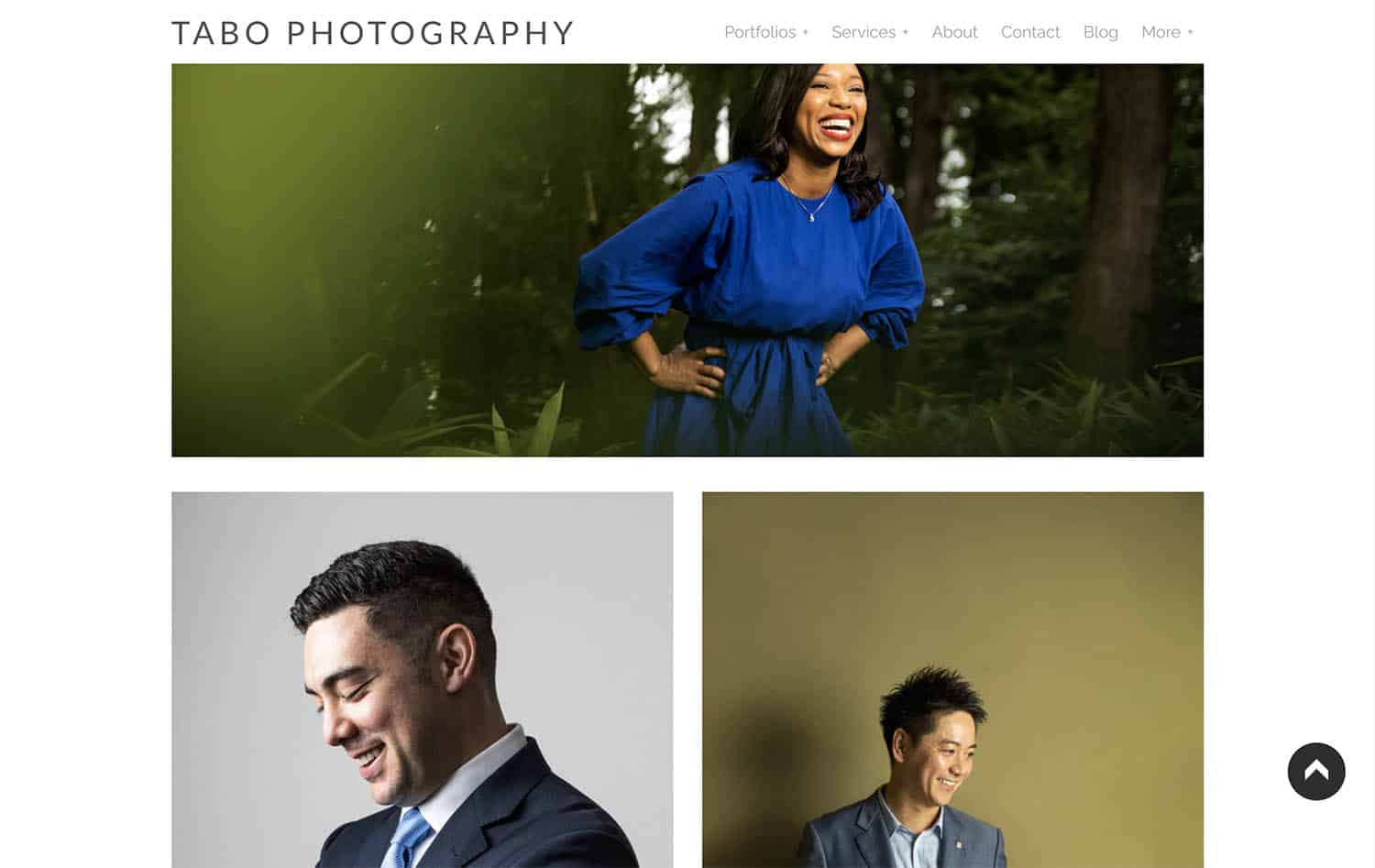
Tabo Photography
Create a photography pricing guide
Whether or not you publish your rates online, you still need to understand your profits (money you earn) and losses (money you spend) so you can create a comprehensive pricing guide. Homeroom offers some fantastic tips for creating your pricing model!
Pitch yourself to local pros
Identify people and companies you’d love to work with, and consider sending them an outreach email or even a mini “postcard portfolio” to introduce them to your photography. As a portrait photographer, your work will be in-demand throughout people’s careers. Don’t hesitate to contact potential clients on an annual basis.
#ShootProofProTip: It’s testimonial time!
Remember the feedback you collected from your portfolio models? Now’s the perfect time to use those positive testimonials in your marketing! Show future clients that you’re a trustworthy photographer, and they won’t hesitate to hire you.
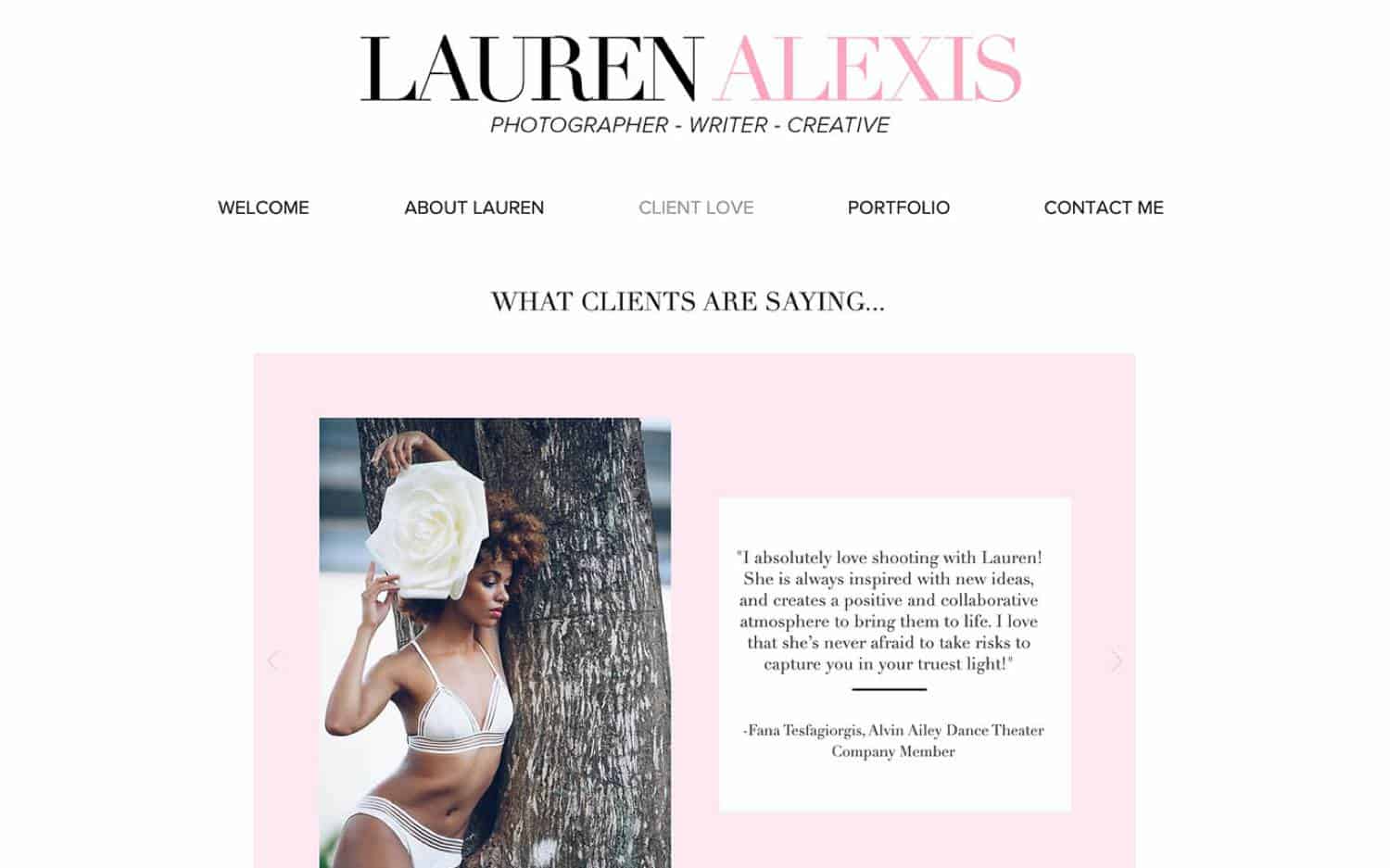
Lauren Alexis
Establish your social marketing strategy
Every artist needs a game plan to get their work out there, and that includes you! Let’s look at some of the ways you can develop a great marketing strategy.
Plan and schedule your social posts in advance
It’s not enough to just have a social media presence. You need content to publish there, too! Choose a platform to get started with, and jot down three to five types of content to share with your audience, then repeat this with your other pages. Try these easy-to-implement ideas, and build your social content plan one week at a time:
- Feature your best/recent work
- Create on-brand graphics with inspiring quotes
- Publish clients testimonials
- Share wardrobe and photography tips and other session day ideas
- Post behind-the-scenes photos of yourself hard at work
- Demonstrate your editing skills by sharing before/after images
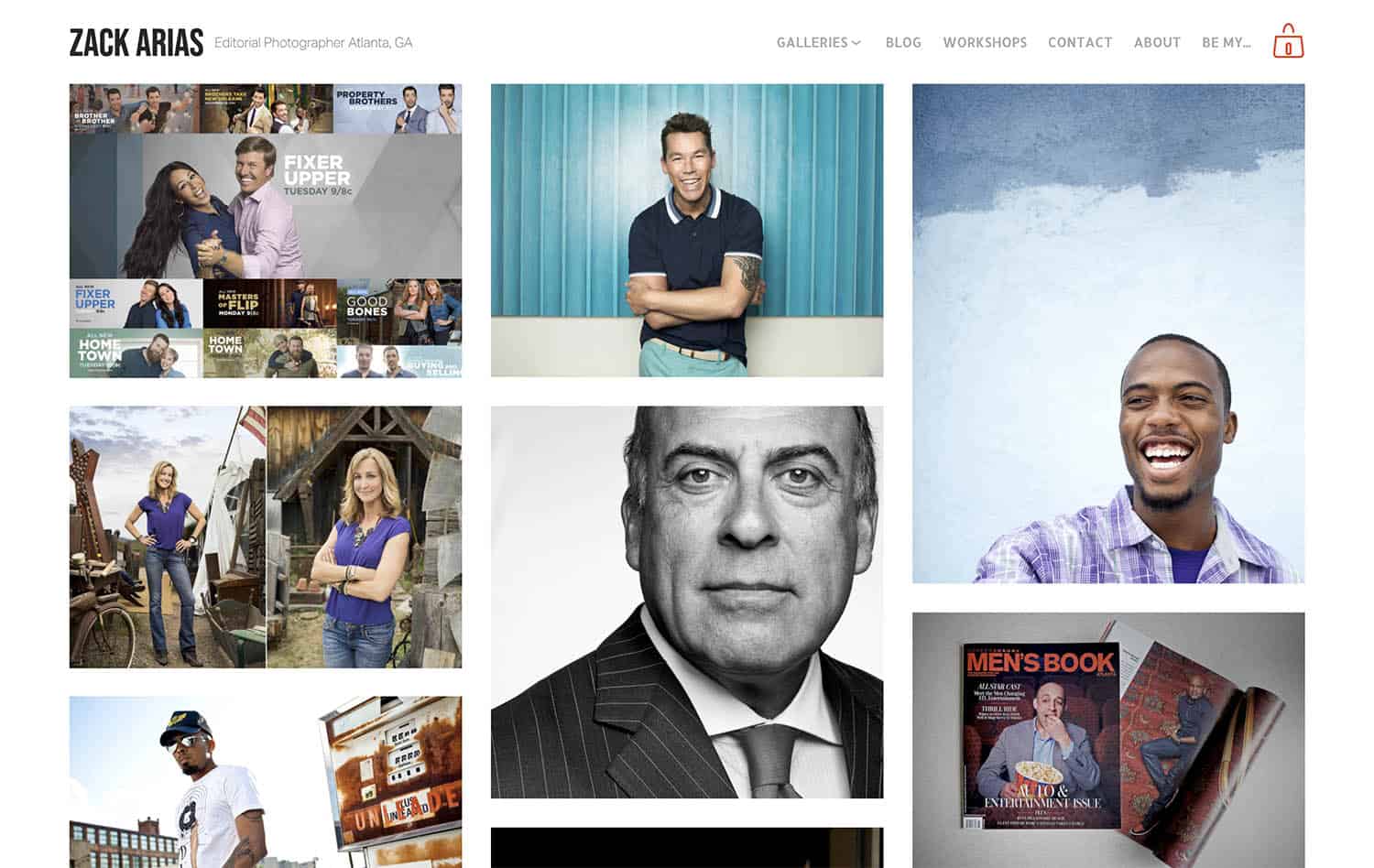
Zack Arias
Deliver your client’s photos in a gorgeous online gallery
If you’re not already using ShootProof, get a free trial going and start delivering stunning image galleries that your clients will want to share!
- Did your clients pre-purchase their digital files? Turn on one-click downloading for them!
- Need to limit downloading to only your clients’ favorite 3 photos? Set a download limit!
- Selling downloads? You can sell per-file, or use ShootProof’s Package Builder to offer pre-determined download collections!
- Are your clients total narcissists? Score! They can also order prints of themselves through ShootProof and your favorite partner lab!
#ShootProofProTip: Create good buzz with “breadcrumbs”
In the weeks leading up to your business launch, start dropping little hints online—wherever it feels natural. This marketing tactic is called “breadcrumbing,” and it gets people excited as Day One of your launch approaches!

Lauren Alexis
Start booking clients!
Hooray! You’re now the proud owner of a brand-new headshot photography business! You’ve put in the effort to bring your dream to fruition, and now you can officially book clients. As your business grows and evolves, continue to sharpen your skills, update your portfolio, and think of new ways to market yourself. You’ve got this!
Written by LAUREN ALEXIS RODRIGUEZ and ANNE SIMONE | Featuring LAUREN ALEXIS PHOTOGRAPHY



